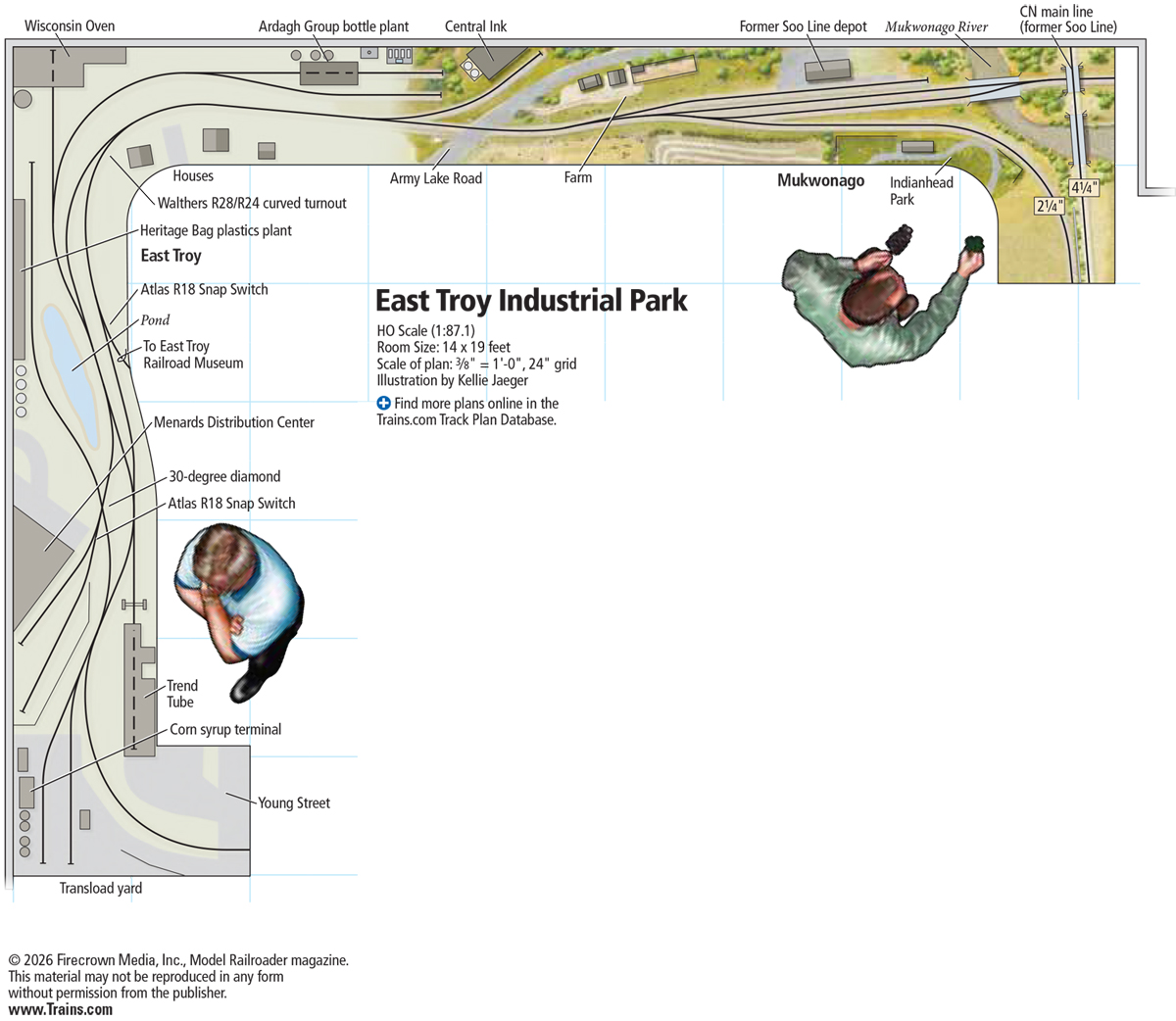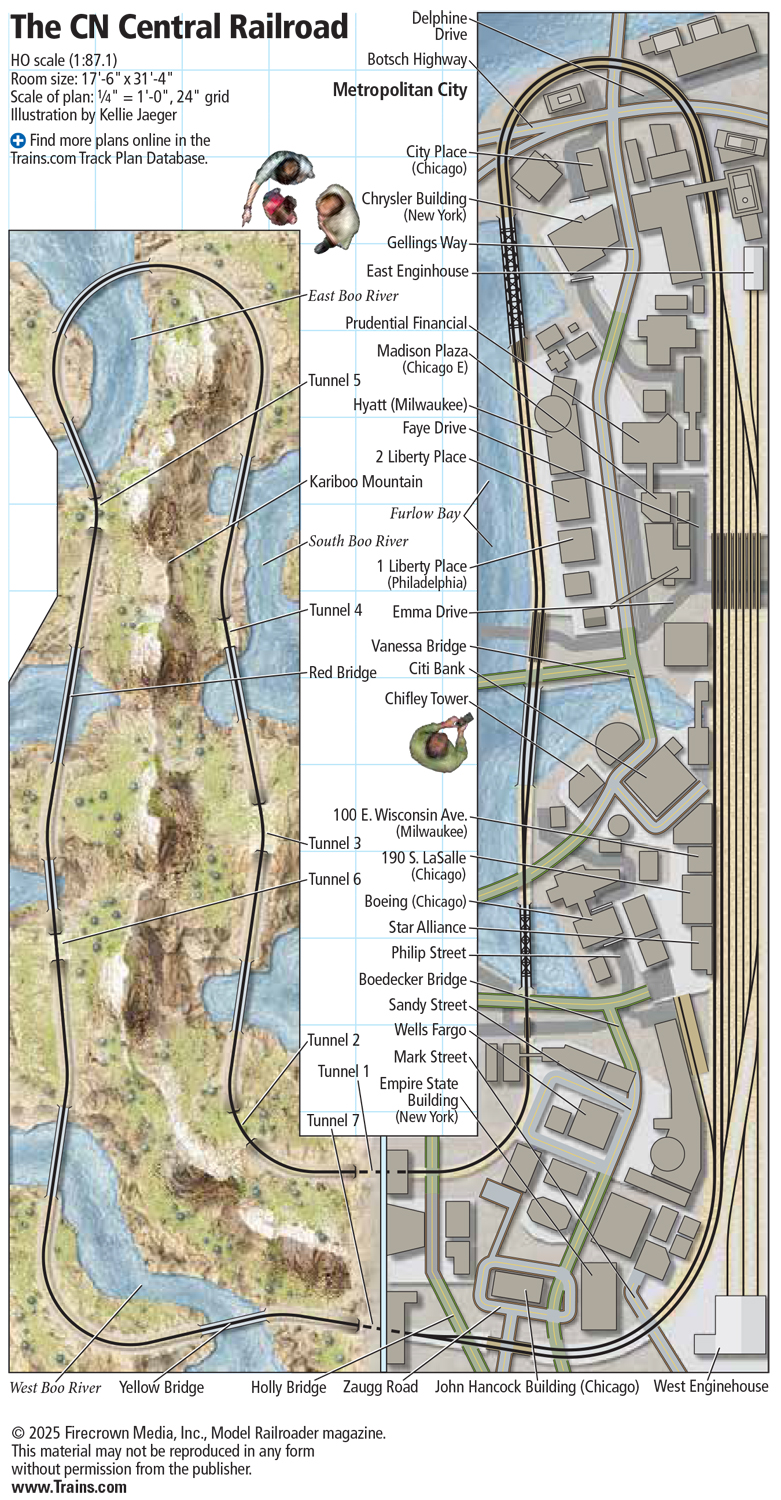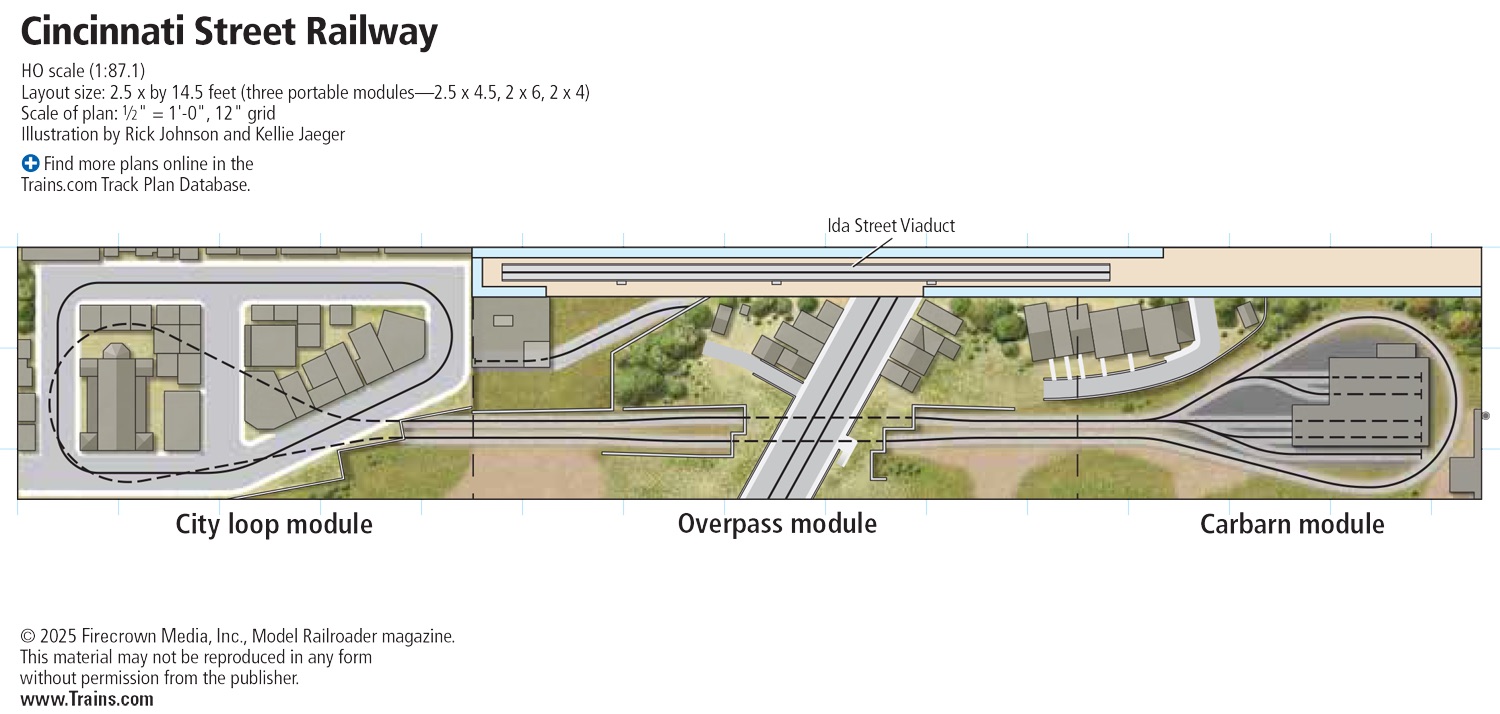Weathering with artist’s oils: Artists’ oils make it easy to apply weathering washes and simulate rust patches, which I did on this HO scale ExactRail boxcar. First, I put some burnt umber on each body panel and on the door. Then I touched the paint with a 1 ⁄2″-wide paintbrush soaked with Turpenoid (an odorless turpentine substitute).
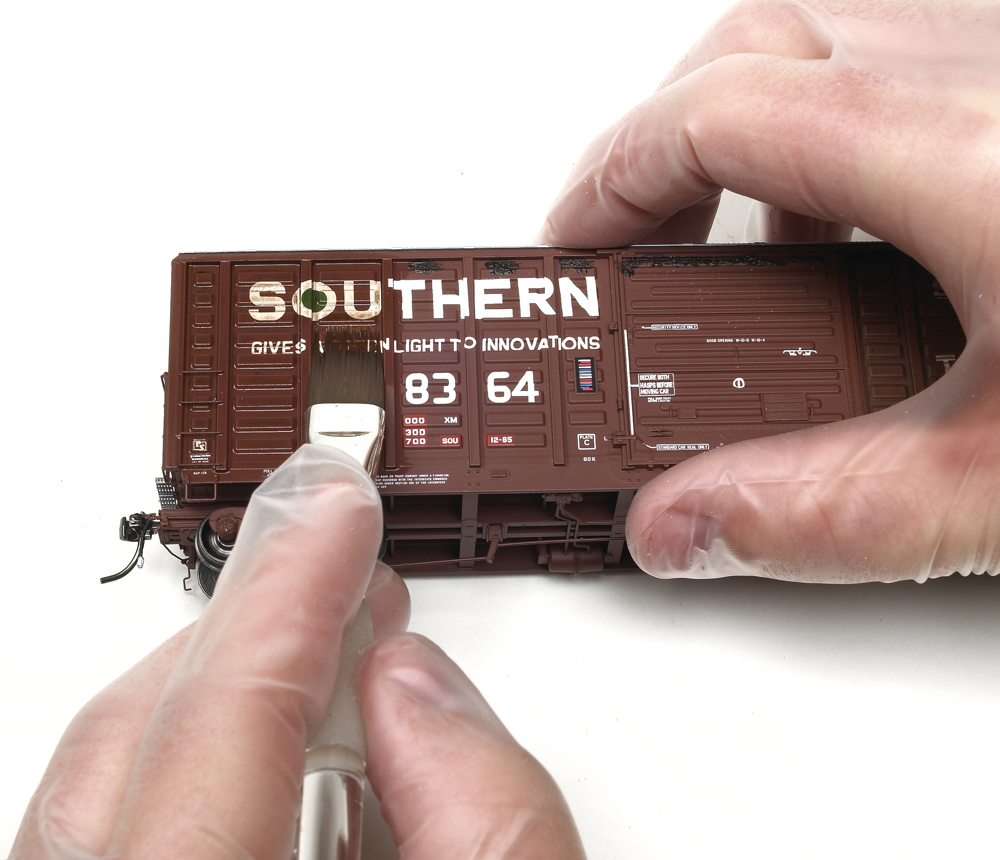
I pulled the thinned paint straight down the car side, keeping the brush parallel to the exterior posts. After letting the burnt umber wash dry for two hours, I shifted my attention to the exterior posts to the right of the door. When studying prototype photos, I noticed these posts had rust patches where the door had rubbed against them. To simulate this, I first applied blotches of burnt umber, then I applied burnt sienna over the burnt umber, leaving a slight halo of the latter color.
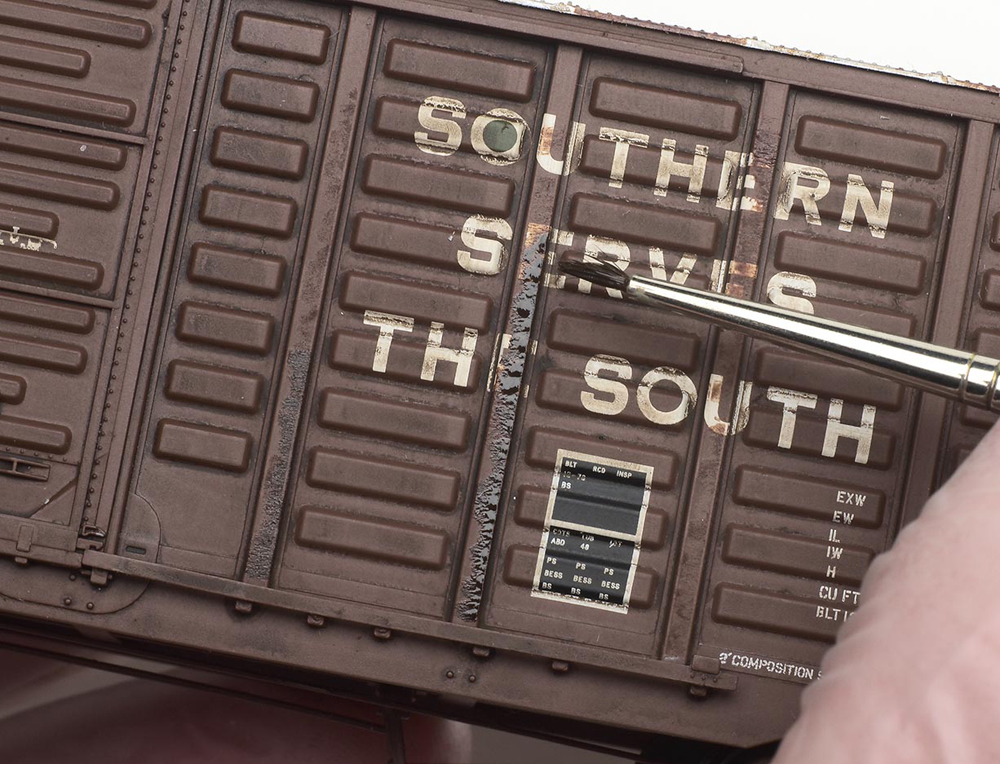
I used the same techniques to weather the roof.
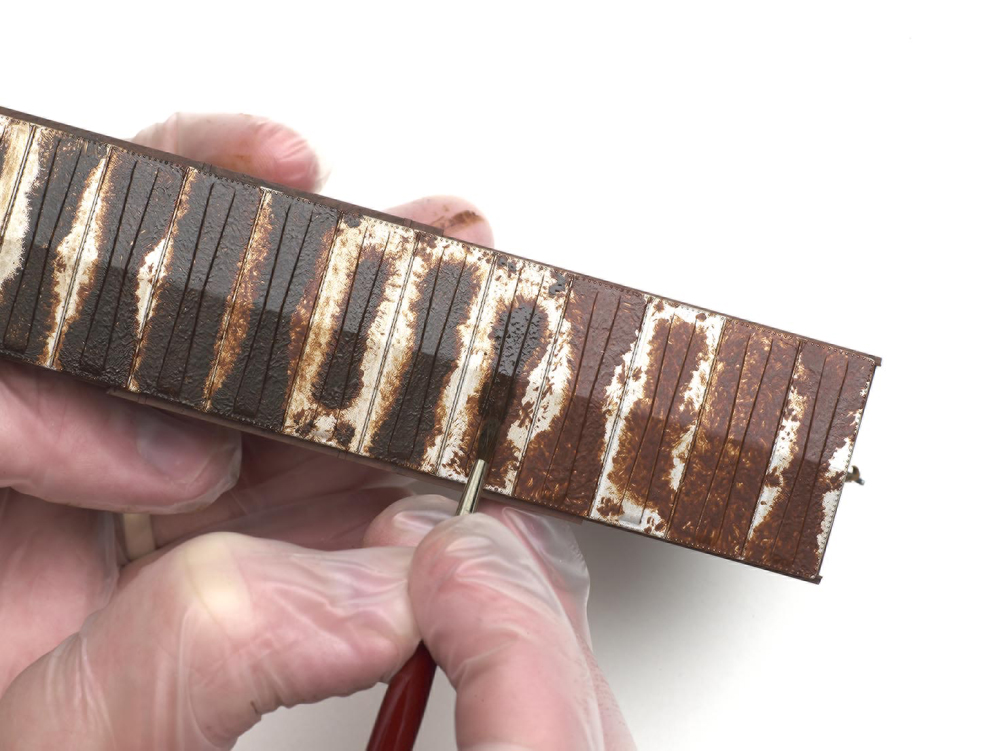
After the paint had dried, I thought the burnt umber and sienna looked too vibrant. To remedy this, I applied a burnt umber wash, which not only toned down the rust patches but muted the bright silver as well. To reduce the chances of removing the rust patches, I applied the wash in a light, almost blotting, motion.
Artists’ oils dry slowly, so take your time and be patient. If you don’t like how the weathering looks, wipe the paint off with some Turpenoid and try again. Weathering with artist’s oils is a forgiving technique.






